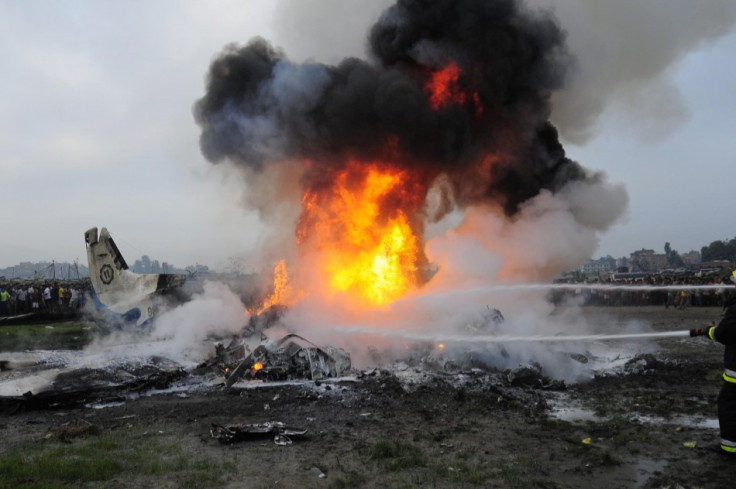Nepal Plane Crash: Did the Pilot Panic in Kathmandu Disaster?

Nepalese aviation officials have claimed the Sita Air Flight crash that killed 19 was caused by the "panic stricken" pilot, according to telegraph.co.uk.
Ratish Chandra Suman, an official from Tribhuvan international airport, said the pilot had reported trouble two minutes after takeoff and appeared to have been trying to turn back to the airport.
The Dornier aircraft crashed on the bank of the Manohara river at 6.18am on Friday in clear weather and witnesses said it was already on fire before it hit the ground.
"The pilot's failure to maintain the required radius is a likely cause of the accident," said senior ministry official Suresh Acharya, adding the plane turned too sharply because it had not gained enough altitude.
Air accident investigators from the UK are now heading to Nepal to help with the investigation into what caused the Everest-bound plane to crash, killing all 19 on board, including British and Chinese Everest-bound trekkers.
Earlier Lal Suman, told reporters that the Sita Air plane struck a bird, believed to be a vulture.
According to Suman, air traffic control contacted the pilot moments after take-off, to question an unorthodox manoeuvre. The pilot replied saying his front engine had been hit by a bird and had failed.
Air traffic control then reportedly told the pilot to make an emergency landing and start a second engine. However the damaged engine caught fire seconds later.
Airline officials identified the British crash victims as Raymond Eagle, 58, Christopher Franc Davey, 51, Vincent Kelly, 52, Darren Kelly, 45, Timothy Oakes, 57, Stephen Holding, 60, and Benjamin Ogden, 27.
Ogden, from Buckingham, an Oxford University graduate who worked for the international law firm Allen & Overy, was on the Everest Base Camp trip to celebrate just having qualified. The firm said the young lawyer, who lived in London, "had an incredibly promising career ahead of him".
© Copyright IBTimes 2024. All rights reserved.























